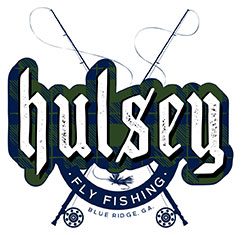October in the mountains is one of the most beautiful times to be out on the water chasing trout. Gone are the scorching days of summer with high water temperatures that can literally spell doom to our low elevation trout populations and make fly fishing a chore, instead of the pleasure it was meant to be. Our southern mountains are vast with a very diverse flora community and that fact in the fall means mega tons of leaves will make their way into our rivers this month. Leaf litter is good for the biomass, or bug life, in the water but can make the act of fishing a little, or a lot, bothersome for a few weeks until it settles to the bottom. There are a couple of tactics that can help overcome having to unhook a piece of leaf from your hook every cast. These include everything from accurately casting your fly to a spot where there is an opening in the river of debris, to using flies that are designed with materials that somewhat cover the hook point and can shed a few pieces of junk.
When the leaf fall is at its peak though, on your favorite creek or river, there’s not a whole lot you can do but grin and bear it. It sometimes amazes me how trout can pick out a fly amongst all the rest of the debris that is ripping down the stream in their face, but they for sure can. I have found that using flies that stand out in coloration or movement can give you the edge over the fish or other anglers. In other words, don’t throw a yellow or brown fly when most of the junk floating down the river is the same color. Also, using a streamer or swung soft hackle, moving across the current instead of a dead drifted nymph pattern, can draw a few more strikes. Brightly colored soft hackles or flashy streamers get the nod more often than drab natural hues. Just giving the trout a little help seeing the fly sometimes is greatly appreciated!
Hatches here in the hills of Georgia and North Carolina in the fall are fairly limited anyway to Blue Winged Olives, Midges, and beautiful October Caddis. If you get lucky and find a hatch coming off and fish responding to them on the surface, it can be a blast. My favorite dry fly to use for BWO’s is just a simple parachute style matched to the size, or one size larger than, the hatching insects. If your fly is a little larger, sometimes it will get the attention of a trout with a bunch more bugs on the water. The same goes for matching the emerging midges; a Griffiths Gnat works great due to the fact that it looks like a small group of midges huddled together in a clump giving the trout more bang for the buck, so to speak.
October Caddis are large bugs, about a size 10 or 12 here in the Appalachians and with enough emerging, can cause the fish to go bonkers! Swinging big orange Caddis emergers with Trout Spey gear is one of the true joys in life and long awaited in all parts of the country. The trout simply explode on them and can provide a memorable experience that won’t soon be forgotten! Make sure you get out and spend some time on your favorite river this autumn; it’s the most wonderful time of the year.
Give David and Becky Hulsey a call at (770) 639-4001 to book a class or a guided trout trip. Visit their website at www.hulseyflyfishing.com.

